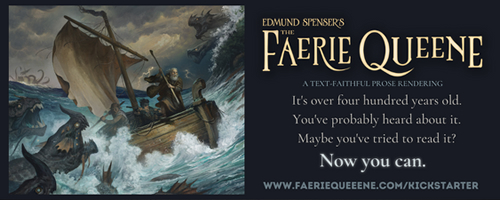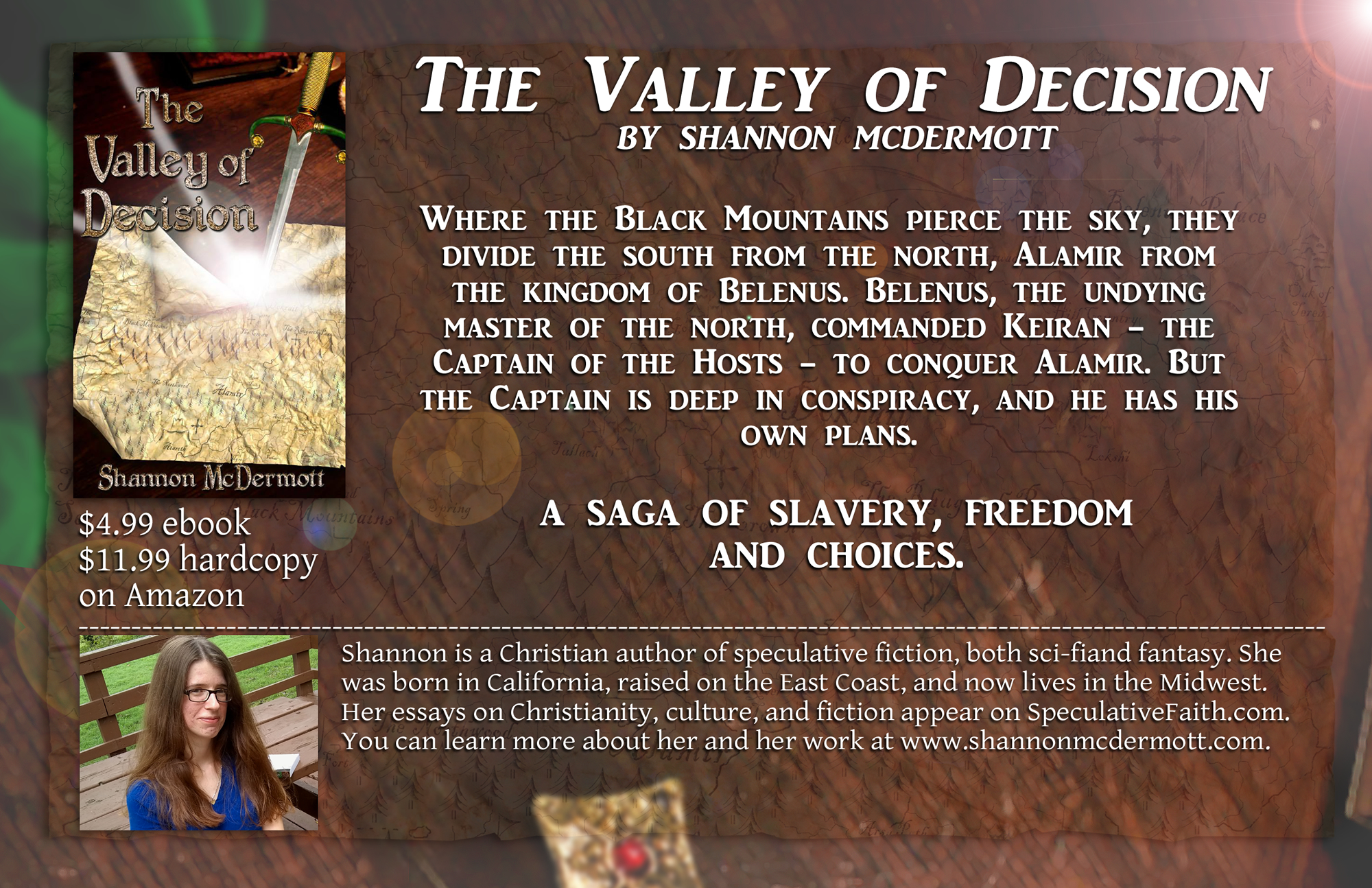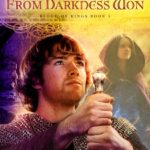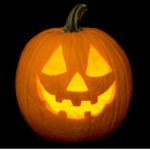The Fine Line
It occurred to me the other day that, although I have been posting at SpecFaith for a few months now, I’ve yet to say anything really controversial. Then I remembered that Halloween is coming up, and that’s always a prime opportunity, what with some Christians getting agitated about the holiday, and other Christians getting agitated with them for getting agitated.

Even Halloween can be innocent.
At the risk of defusing the controversy, I want to make clear that this post is not about whether Christians can or should celebrate Halloween. I regard the observance of all “special days” as a matter of Christian liberty, in which Christians may without condemnation do as they please. My position, roughly summed up, is that everybody can celebrate Halloween and nobody has to, and whether anybody should is based on personal factors, i.e. stuff about your life I don’t know. So I want to talk about something else.
I bring up Halloween because there is one aspect of the holiday that leads me out to a broader and more important issue. As October rolls by, I can’t help noticing, and thinking about, the part of Halloween I really dislike. And it’s not the costumes, or the trick-or-treating, or the origins of the holiday.
It’s the decorations. Cobwebs, spiders, skeletons, ghosts, tombstones, bloodstains, skulls, hearses. It is an ugly holiday. Nor is this entirely accidental. Nobody ever set up cardboard tombstones in the pursuit of beauty; the macabre trimmings of Halloween are chosen because they repulse, not because they attract.
For many people (by no means all), Halloween is an opportunity to indulge in the darker side, to deliberately evoke that shudder that all humans feel at ghosts and cemeteries, and many enjoy. It seems wrong, somehow, to make the emblems of Death, in his ghoulish glory, symbols of a holiday.
Death is, of course, a fact and an exceedingly stubborn one at that; we all have to face up to it sooner or later. But here is the question, and one that applies far beyond Halloween and even death: At what point does a necessary attention to sober facts degenerate into an unhealthy fascination with darkness?
This temptation to wallow is, I think, a fairly common one, and it takes different forms. Horror and other forms of dark fiction can indulge the unhealthy interest, but so can other genres – including romance, which is not quite the opposite of speculative fiction it is sometimes taken to be.
Ordinary gossip, the gossip rags, various fiction, and even respectable nonfiction can satisfy another sort of morbidity: an inordinate interest in other people’s sins and tragedies, in all their sicknesses, physical or emotional. To this kind of curiosity, it’s not the people who are interesting, just their mess.
Christians have had their own versions of this problem, although that is mostly in the past. (These days, churches are more often guilty of shallowness than they are of morbidity.) Teachers’ attempts to detail the exact horrors of hell were inevitably flights of human imagination, going far beyond the scant imagery in the Bible, and it could get rather gruesome. I wonder if even the Puritan fixation with one’s own sins could become morbid – if, instead of remembering that they were meant to rise up from the mud and walk, they sometimes rubbed their faces in it to feel how bad it really was.
Of course, our sin is another of those sober facts we need to face up to. And that brings me back to the question: Where is the line between facing the darkness and simply roving unwholesomely in it?
I suspect that, for different people, the line is drawn in different places; a news report, for instance, could be read with honest concern by one person and with morbid curiosity by another. But we have to remember to try and stay on the right side of that line, and not only on Halloween.










































Good points, Shannon. I tend to agree that the line is drawn in different places for different people. Just as some people in the early church could eat pork without it bothering their conscience, trusting that God really didn’t require that kosher standard of the Gentiles, others would feel guilty and that guilt became a stumbling block for them.
Each of us should be watchful, I think, to monitor our own fascinations and indulgences. Even good things can become a problem when taken to the extreme or idolized. And things of darkness should be handled with wisdom, discernment and the awareness that we never make these decisions in a vacuum. It isn’t just about what *we* can handle. How we handle them becomes a witness to others around us — friends, family members, etc. Our choices can lead others to sin, even if we aren’t guilty ourselves.
One example of making a decision based on my convictions, and at odds with my natural inclination: I find skulls and bones fascinating. Death and decay are a fascinating part of the cycle of our fallen world. Every dead thing speaks to us, saying, “You are but a breath, a vapor. Your end is coming. What does your life really mean, when it’s all over?”
But I try not to glorify skull and skeleton symbols too much by surrounding myself with images of them or wearing clothing with them or doing art that focuses on them, because I feel that my King is the King of Life and His message is a message of Life, not death. That’s my personal decision. It’s not always easy for me to say “no” to death-imagery, because there are some really cute, beautiful, or interesting things out there. But I hold the line, because to me, “cute” (or whatever) isn’t a good enough reason to promote death. The Bible calls death the enemy of humanity and of Jesus, saying that “the last enemy that will be destroyed is death” (1 Cor. 15:26). For me, that’s a good enough reason to eschew anything that promotes it.
Everybody will have their own convictions, so I don’t try to tell others what to do. But I think that everybody should at least consider these things, search the scriptures, and make decisions informed by what they find there and by what they feel the Spirit saying to their hearts. We are the salt of the earth, the bearers of the light. We will be held accountable if we do not take our responsibility seriously enough to look into these matters.
So, thanks for bringing it up!
And thanks for sharing your own thoughts, Teddi.
I also think Paul’s teaching about eating meat has principles we can apply to other issues. He recognized his freedom, but he remained very much aware of other things, such as the importance of always “acting in love”.
Excellent topic. My first thought is that people who indulge in the scary or creepy part of Halloween are doing it because it’s a “safe scare.” They can get dark, knowing it’s not something that will really touch them. For the most part, anyway. It’s pretty much safe, no matter how gory they get.
I used to love Halloween because I love getting dressed up and being creative in making costumes. I love fall and all the decorations with pumpkins and mums and cornstalks. I love the colors. I love raking leaves. I love bonfires. I even loved the creepy stuff and put up spider webs made of yarn on my porch and hung anything scary in my windows and set out speakers on my porch on Halloween blasting scary music and sound effects.
I’m not so crazy about the creepy stuff now. I’d rather focus on the beauty of the season, the abundance of what I have, and the change from hot humid days to cool autumn nights. Several years ago, I started using Halloween as a way to minister to my neighbors and hungry parents because of what novelist Lisa Samson said. She lives on a cul-de-sac and she always makes a big pot of vegetable soup to feed parents who come straight from work to take their kids out trick or treating and have had no time for dinner. I loved this idea. So, for at least 5 years now, I grill hotdogs and I made a big pot of chili and whip up desserts and I set everything up on my front porch. I invite all the neighbors and any friends who want to come and hang out. If any parents are hungry, I give them chili in a Styrofoam cup and a plastic spoon and away they go. We give out treats and offer cookies and hot chocolate. We have a blast.
If anyone asks why, I always say, because I want to bless you tonight.
Happy Halloween!
That’s a great thing to do on Halloween, Pam. Happy Halloween!
My junior and senior years of college, I finally got into the spirit enough to decorate the door to my dorm suite, utilizing the mad cardboard skillz I’d developed in my underfunded high school drama class.
Junior year, I did it up as the TARDIS. Maybe three people got the reference (*sobs*), but what was really funny was that the little kids got freaked out when they came to my door because by then they associated decorated doors with people who were invested in freaking them out. And I quietly laughed to myself at their pain, because I’m probably a terrible person.
Senior year, I stole cardboard from the homemade castle in the lobby (that year’s homecoming theme was the Renaissance) and went with a Gothic feel with a columned doorway, completely drawn by hand, with a triangular lintel. It took forever, especially because the lintel kept falling down when the overhead vent kept degunking the adhesive, but it was awesome. I am so proud of that thing that I would post pics here except my clunker phone won’t let me transfer the pics to my computer.
Very creative, notleia. Me, I’d have given up and hit Wal-Mart for some fake pumpkins long before accomplishing that.